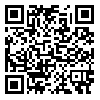Volume 3, Issue 1 (Continuously Updated 2020)
Func Disabil J 2020, 3(1): 77-82 |
Back to browse issues page
Download citation:
BibTeX | RIS | EndNote | Medlars | ProCite | Reference Manager | RefWorks
Send citation to:



BibTeX | RIS | EndNote | Medlars | ProCite | Reference Manager | RefWorks
Send citation to:
Ghorbani A, Saneii S H, Yari P. Phonological Knowledge in 5-year-old Bilingual Turkish Qashqai-Persian Children and Fars Monolingual Children. Func Disabil J 2020; 3 (1) :77-82
URL: http://fdj.iums.ac.ir/article-1-157-en.html
URL: http://fdj.iums.ac.ir/article-1-157-en.html
1- Department of Speech and Language Pathology, School of Rehabilitation Sciences, Iran University of Medical Sciences, Tehran, Iran.
2- Department of Basic Sciences, School of Rehabilitation Sciences, Iran University of Medical Sciences, Tehran, Iran.
2- Department of Basic Sciences, School of Rehabilitation Sciences, Iran University of Medical Sciences, Tehran, Iran.
Abstract: (1556 Views)
Background & Objectives: Phonological awareness is a part of metalinguistic knowledge that is significantly associated with a wide range of language skills and processes, including literacy, and reading and writing skills. The purpose of the present study was to investigate the phonological awareness skills in bilingual five years old Qashqai- Persian children with monolingual Persian speaking children.
Methods: 15 bilingual and 15 monolingual children (10 girls and 5 boys) were selected from kindergartens in Firouzabad, Fars, in February and early March 2020 and evaluated by Auditory Test of Phonological Awareness Skills (ASHA-5) for 5-6 years old Persian speaking children.
Results: The results implied that the mean total score (P=0.733), as well as the mean score of each component of phonological awareness skills, including syllable awareness (P=0.328), rhyme awareness (P=0.625), and phonemic awareness (P=0.946) in monolingual 5-year-old children, were higher than the Qashqai-Persian bilingual group, but the differences were not significant (P≥0.05).
Conclusion: The findings of the present study demonstrated that phonological awareness skills in the Persian language are higher in monolingual children than in Qashqai-Persian bilingual children, but the differences were not significant. Therefore, paying more attention and increasing knowledge about this aspect of language in bilingual children can be more effective in planning for education, evaluation, and treatment of phonological disorders in this group of children, especially in pre-school ages.
Methods: 15 bilingual and 15 monolingual children (10 girls and 5 boys) were selected from kindergartens in Firouzabad, Fars, in February and early March 2020 and evaluated by Auditory Test of Phonological Awareness Skills (ASHA-5) for 5-6 years old Persian speaking children.
Results: The results implied that the mean total score (P=0.733), as well as the mean score of each component of phonological awareness skills, including syllable awareness (P=0.328), rhyme awareness (P=0.625), and phonemic awareness (P=0.946) in monolingual 5-year-old children, were higher than the Qashqai-Persian bilingual group, but the differences were not significant (P≥0.05).
Conclusion: The findings of the present study demonstrated that phonological awareness skills in the Persian language are higher in monolingual children than in Qashqai-Persian bilingual children, but the differences were not significant. Therefore, paying more attention and increasing knowledge about this aspect of language in bilingual children can be more effective in planning for education, evaluation, and treatment of phonological disorders in this group of children, especially in pre-school ages.
Type of Study: Research |
Subject:
Physiotherapy
Received: 2020/09/20 | Accepted: 2020/11/30 | Published: 2020/12/30
Received: 2020/09/20 | Accepted: 2020/11/30 | Published: 2020/12/30








